Fix: Network Error 0x800704cf
There are numerous Windows-related issues you can encounter during the time you use your PC. Windows operating system is quite user-friendly in some cases but it can often confuse its users with the variety of error messages it can throw at them.
There errors are often unexplained and they also appear randomly, leaving your wondering about what you did wrong and similar. That is why you should always watch out after you download something from the Internet, after you install a new program, or after you change or tweak certain settings in Windows. Let’s take a look at the following issue.
Fix Network Error 0x800704cf on Windows
This particular error code is often related to users’ home networks and it manifests itself through the unavailability of other PCs connected to the same network. The pop-up message says “”Error 0x800704cf the network location cannot be reached” and users are unable to connect to other PCs all of the sudden.
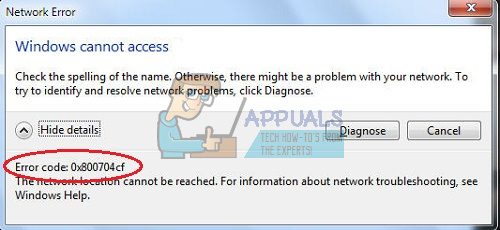
To share files and folders, Windows system users may employ File Explorer. To enable this ability, the system should be connected as a part of domain and have well defined network connections. This function is referred to as Workgroup. It is widely used on Window 8 and later versions, including 10. This error prevents that and we will try the following methods to fix this.
Solution 1: Check the Box Next to “Client for Microsoft Networks”
This easy fix was able to help quite a lot of people even though the fix is quite easy to pull off. This error message was bugging quite a lot of people but some of them were able to fix it simply by following the instructions below.
For Windows 10:
- Right-click the Internet connection icon atat the bottom right part of your desktop and click on the Network and Sharing Center option.

- Navigate to the following option: Change Adapter Settings >> Select the connection you are currently using >> Properties >> Networking tab.
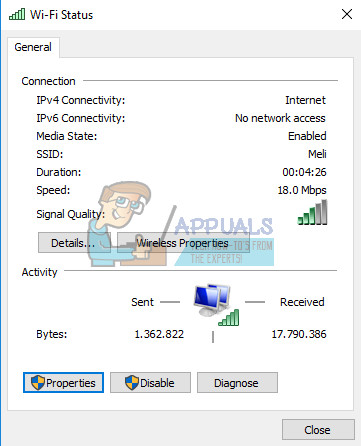
- Check the checkbox next to the “Client for Microsoft Networks” option.
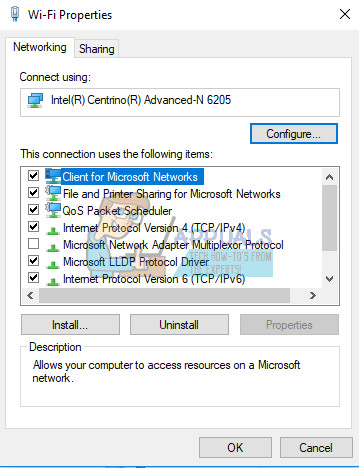
For Older Versions:
- Open the Windows Control Panel by locating it in the Start menu.

- Locate the My Network Places option in the Start Menu, right-click on it, and choose the Properties optionfrom the context menu in order to open the Network Connections window. Locate the Local Area Connection item and open it.
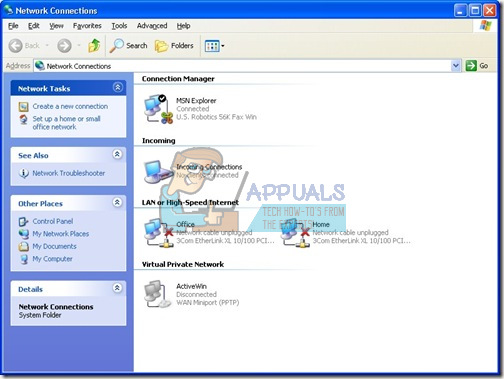
- Expand the General tab and check the box next to the Client for Microsoft Networks option.
- Click OK and restart the computer.
Solution 2: Official Solution by Microsoft For Windows Server 2003 Computers
This particular solution was provided by Microsoft for all computers running Windows Server 2003 and it should fix your problem in no time on this system only. Please don’t try this if you are using any other version of Windows.
There are some other symptoms which occur along this message on Windows Server 2003 such as:
- On this server, you are unable to access shares on other computers.
- On other computers, you are unable to access shares on this server. You may receive this error:
\\<computername>
The network location cannot be Reached. For information about network troubleshooting, see Windows Help.
- If you run IPCONFIG, it shows “Netbios over Tcpip” as disabled. However, in the Network card properties GUI, the “Netbios over Tcpip” option is displayed as Enabled.
- If you run NetDIAG on this server, you see messages like the following:
Redir and Browser test . . . . . . : Failed
List of transports currently bound to the Redir
[FATAL] Unable to retrieve transport list from Redir. [ERROR_NETWORK_UNREACHABLE]- If it is a Domain Controller, DCDiag shows many tests failings with Win32 Error code 1231.
- If it is a WINS server, when you try to open the WINS console, the error “Cannot find the WINS server” appears.
Follow the instructions below in order to fix this immediately.
- Run Registry Editor (regedit.exe), and check the following registry key:
[HKEY_LOCAL_MACHINE\SYSTEM\CurrentControlSet\Services\NetBT\Parameters]
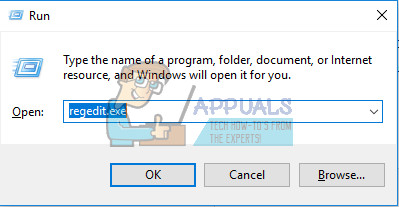
- Please find if the “TransportBindName” value exists. If either of them does not exist, create it. If either one is incorrect, change the data. The values should be like this:
Name: TransportBindName
Type: REGSZ
Value: \Device\
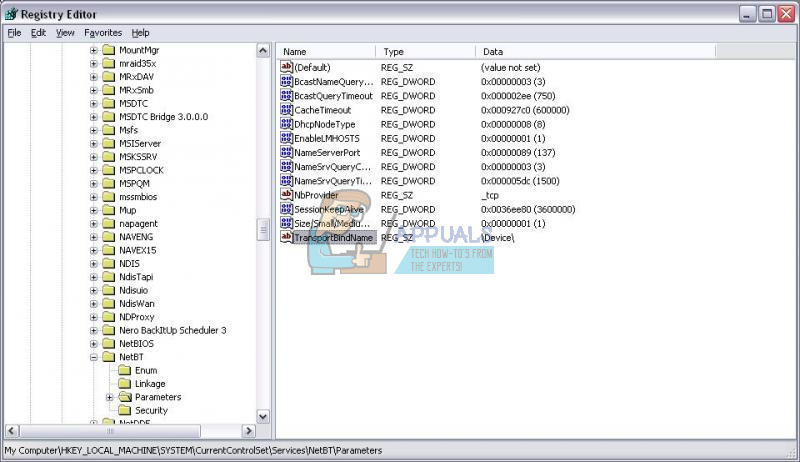
- Under the same registry key, if you find the “SMBDeviceEnabled” value and if you notice that its value is set to 0, it means that something is preventing it from being open. Change the value to 1.
Name: SMBDeviceEnabled
Type: REG_DWORD
Value: 1
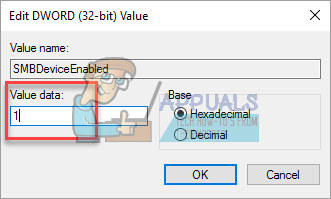
Solution 3: Reset TCP/IP
Resetting TCP/IP fix the issue for various users who were struggling with this exact issue. They also released a hotfix file which can fix the issue for you right away. However, if the file does not work for you for some reason, you can always reset it manually.
- To reset TCP/IP automatically, click the Download button on this Microsoft’s page. In the File Download dialog box, click Run or Open.
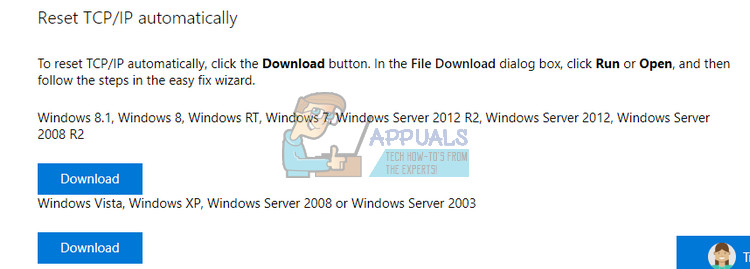
- Follow the steps in the easy fix wizard and the problem should go away.
- Restart your computer to save changes.
Fix the Problem Manually
In order to fix the problem manually you will need to use Command Prompt. The solution will be provided for various Windows OS versions.
Windows 8, Windows 8.1, Windows 10
- On the Start screen, type CMD. In the search results, right-click Command Prompt, and then select Run as administrator.
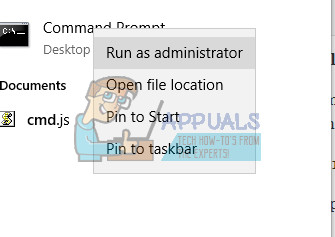
- At the command prompt, enter the following command, and then press Enter:
netsh int ip reset c:\resetlog.txt

- Note If you don’t want to specify a directory path for the log file, run the following command instead:
netsh int ip reset
- Restart the computer.
Windows 7 and Windows Vista
- To open a command prompt, select Start and then type cmd in the Search programs and files box.
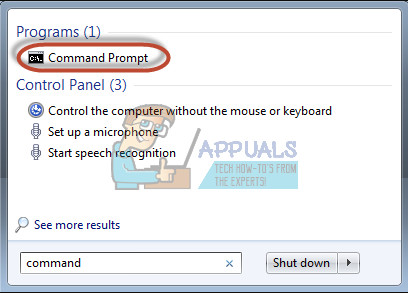
- Under Programs, right-click the Command Prompt icon, and then select Run as administrator.
- When the User Account Control box appears, select Yes.
- At the command prompt, enter the following command, and then press Enter:
netsh int ip reset c:\resetlog.txt

- Note If you don’t want to specify a directory path for the log file, run the following command instead:
netsh int ip reset resetlog.txt
- Restart the computer.
Windows XP
- To open a command prompt, select Start > Run >> Type “cmd” in the Run dialog box.
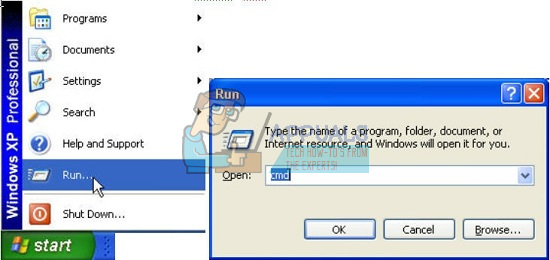
- When Command Prompt starts, enter the command we used in the previous steps:
netsh int ip reset c:\resetlog.txt

- Note If you don’t want to specify a directory path for the log file, run the following command instead:
netsh int ip reset
- Restart the computer.
When you run the reset command, it overwrites the following registry keys, both of which are used by TCP/IP:
SYSTEM\CurrentControlSet\Services\Tcpip\Parameters
SYSTEM\CurrentControlSet\Services\DHCP\Parameters
Now you have successfully reset the TCP/IP utility and the problem should seize to appear if this was causing the error to appear.
Note: You must be logged on to the computer as an administrator to perform the steps.
Solution 4: Reinstall Network Adapters
This solution has been suggested by many people as a working solution since it’s usually the drivers that create this whole fuss regarding this particular error message. However, drivers can be easily reinstalled so it’s the best if you simply uninstall all network adapters and let Windows install them again.
- Click Start and type Run. Select Run, A Run dialog box will appear.
- Type “devmgmt.msc” in the run box and click OK button. This is to open Device Manager Window. You can also search for Device Manager if you are using Windows 10.
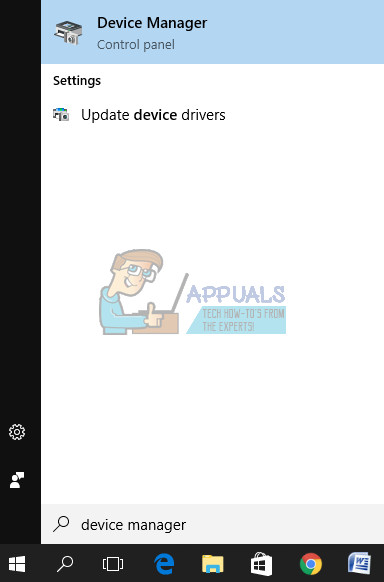
- In Device Manager, expand category “Network Adapters“. Under this category, right-click on on your network adapter (the one you want to uninstall) and select the Uninstall option from the context menu.

- You may be required to confirm the uninstallation. Check the box next to “Delete the driver software for this device” and click OK button.
- Restart your PC for the change to take effect. After restarting, Windows will attempt to reinstall the driver and replacing it with the manufacturer’s driver.
- If it doesn’t install the driver automatically, open the Device Manager again, click on the Action menu and select the Scan for hardware changes option.